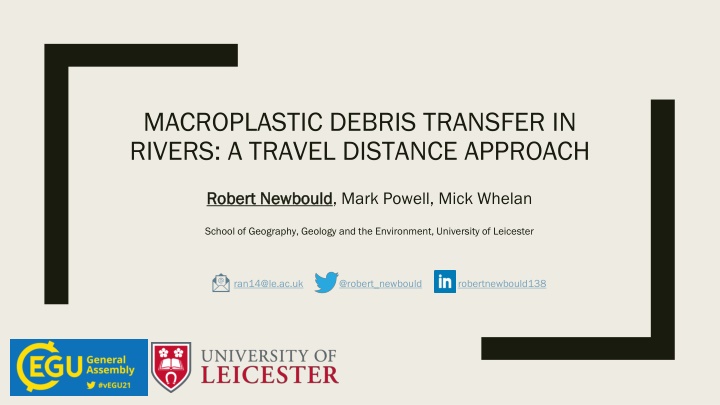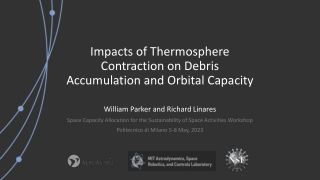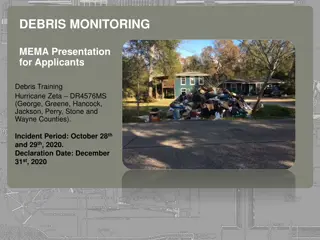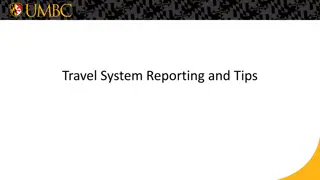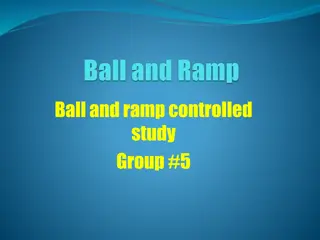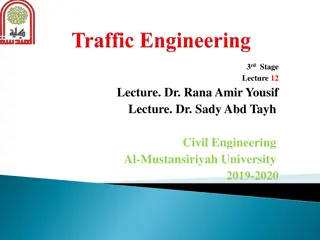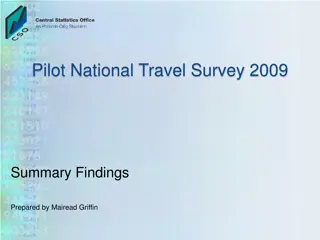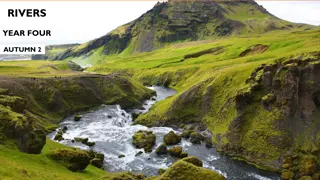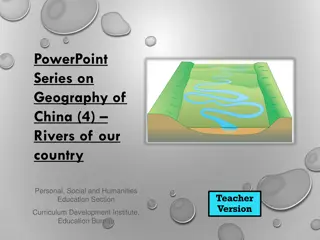Macroplastic Debris Transfer in Rivers: A Travel Distance Approach
Existing methods for studying plastic transport in rivers often overlook displacement and storage processes. This study presents empirical data on macroplastic tracer transport in a river reach, along with a numerical model to predict travel distance distributions. Tracer experiments using plastic bottle tracers showed variability in travel distances due to trapping points like overhanging trees and meander bends. A stochastic model was developed to simulate plastic debris transfer, trapping, and release, providing insights into plastic retention, accumulation zones, and travel distance predictions.
Download Presentation

Please find below an Image/Link to download the presentation.
The content on the website is provided AS IS for your information and personal use only. It may not be sold, licensed, or shared on other websites without obtaining consent from the author.If you encounter any issues during the download, it is possible that the publisher has removed the file from their server.
You are allowed to download the files provided on this website for personal or commercial use, subject to the condition that they are used lawfully. All files are the property of their respective owners.
The content on the website is provided AS IS for your information and personal use only. It may not be sold, licensed, or shared on other websites without obtaining consent from the author.
E N D
Presentation Transcript
MACROPLASTIC DEBRIS TRANSFER IN RIVERS: A TRAVEL DISTANCE APPROACH Robert Newbould Robert Newbould, Mark Powell, Mick Whelan School of Geography, Geology and the Environment, University of Leicester ran14@le.ac.uk @robert_newbould robertnewbould138
Introduction Existing methods to investigate plastic transport in rivers do no explicitly consider plastic displacement and storage processes Here we describe empirical data on the transport of macroplastic tracers in a small river reach and a numerical model framework which attempts to describe processes controlling displacement and storage to predict travel distance distributions Fig. Fig. 1 1 Tracers trapped along channel banks
Tracer Experiments Plastic bottle tracers were injected at the upstream boundary and the location of each bottle was recorded after 24 hours to produce a travel distance distribution The location and nature of trapping points were recorded The experiment was repeated six times under similar and steady discharge conditions Fig. 2 shows the combined travel distance distribution from all replicates, colour coded according to the presence/absence of trapping points Travel distances were Travel distances were Low (x = 231 m) Highly variable between replicates (SEM = 106 m) Mediated by the location of discrete trapping points (particularly overhanging trees and meander bends) Fig. Fig. 2 2 - - Combined travel distance distribution from six replicate experiments
Modelling Methods: A stochastic model was constructed to simulate the transfer, trapping and release of plastic debris The probability of trapping, p(T), in discrete reaches (cells) is described by hypothetical relationships between p(T) and channel and vegetation characteristics (see Fig. 3) A series of Bernoulli trials are performed for each tracer item, using uniform random numbers which are compared to p(T), to predict the location of particles in each model iteration The model was calibrated using the empirical observations of tracer locations after 24 hours Fig. Fig. 3 3 - - Schematic illustration of the transfer of macroplastic debris from cell to cell and probability of trapping equations * p(FS) is the probability of trapping in flow separation zones, p(CB) is the probability of trapping along channel banks, p(V) is the probability of trapping in overhanging vegetation, S is the sinuosity index, w is channel width, w0 is minimum channel width and a, b and c are calibration parameters
Modelling Key Results: The modelled travel distance distribution was in general agreement with the observed data (Fig. 4) Trapping by overhanging trees was simulated well; trapping along meander bends, less so The model can be used to evaluate the effect of plastic retention on flux, identify plastic accumulation zones and predict travel distance and residence time distributions Fig. Fig. 4 4 - - CDF of predicted and observed 24 h travel distances
Discussion and Conclusions Summary: We present a new approach to investigate macroplastic transport, which considers the processes controlling retention and displacement and predicts the travel distances of macroplastic debris Limitations and Future Work: Model performance is limited by an imperfect understanding of displacement and trapping processes Additional experiments in reaches with similar and different characteristics and at different spatial and temporal scales should improve this understanding and improve model performance Accurate estimates of the location, frequency and volume of plastic emission to rivers are also needed for real-world estimates of plastic retention and flux
